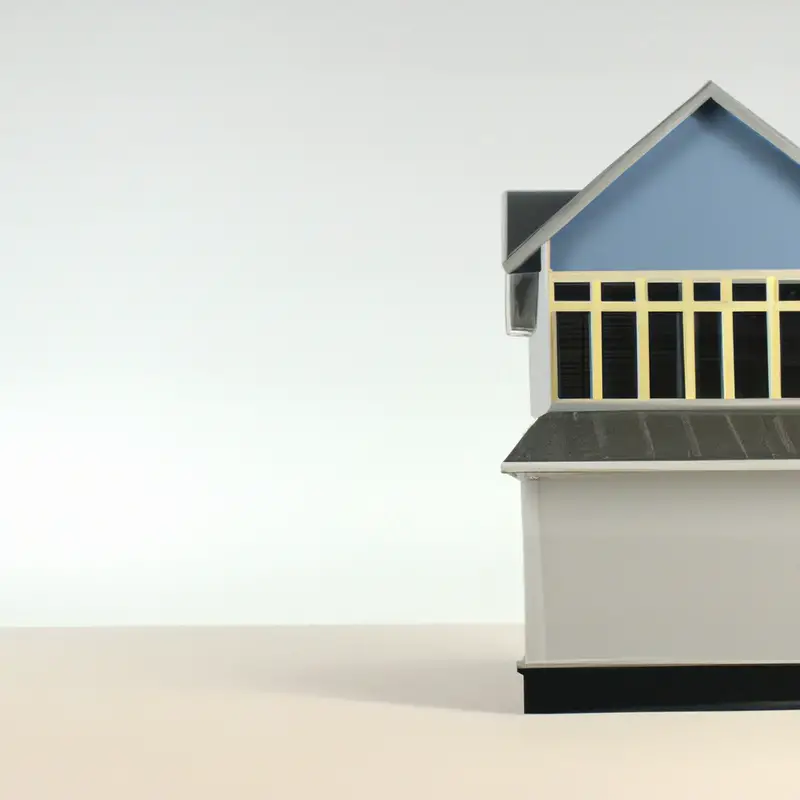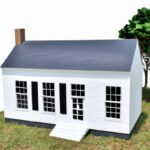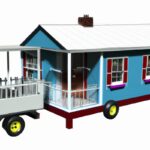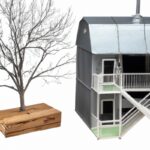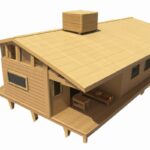Key Takeaways:
- Wood is the most common material used to build tiny houses.
- Steel is also a popular choice for constructing tiny homes.
- Other materials like concrete and recycled materials are gaining popularity in tiny house construction.
- The choice of material depends on factors like budget, durability, and environmental impact.
Are you ready to embark on a grand adventure in a cozy space?
Tiny houses have captured the imaginations of many, and their popularity is soaring.
But have you ever wondered what materials make up these charming abodes?
In this article, I’ll take you on a journey through the most common materials used to construct tiny houses.
We’ll explore the classic choice of wood and its benefits, the strength and durability of steel, the eco-friendly approach of using recycled materials, and even unique options that push the boundaries of conventional construction.
So, whether you’re dreaming of your own tiny oasis or simply curious about the possibilities, let’s dive in and discover the incredible world of tiny house materials.
Material | Description |
Wood | A popular choice for tiny house construction due to its versatility, affordability, and availability. |
Steel | Provides excellent durability and strength, but is heavier and may require additional insulation. |
Concrete | Offers exceptional durability and energy efficiency, but requires more extensive construction methods. |
Shipping Containers | Reuse of shipping containers as a building material is gaining popularity for their durability, low cost, and quick construction. |
Straw Bales | Environmentally friendly and renewable material that provides excellent insulation properties. |
Recycled Materials | Using salvaged materials such as reclaimed wood, windows, and doors can add character and reduce costs. |
Wood: A Classic Choice for Tiny House Construction
Benefits of Using Wood
Wood is a fantastic material choice for building a tiny house.
Here are some benefits of using wood:
- Sustainability: Wood is a renewable resource, making it an eco-friendly option for construction.
- Cost-effective: Wood is generally more affordable than other building materials, which can help keep the overall cost of the tiny house down.
- Insulation: Wood provides excellent natural insulation, helping to regulate temperature and reduce energy consumption.
- Versatility: Wood can be easily customized and shaped to create unique and personalized designs for your tiny house.
- Aesthetically pleasing: Wood offers a warm and natural aesthetic that can create a cozy and inviting atmosphere inside the tiny house.
Overall, using wood as the primary material for your tiny house construction can provide numerous benefits in terms of sustainability, affordability, insulation, versatility, and aesthetics.
Considerations When Using Wood for Tiny House Construction
When using wood for tiny house construction, there are a few considerations to keep in mind.
First, ensure that the wood is properly treated to protect against pests and moisture.
Also, be aware of the weight of the wood, as it can affect the mobility of the tiny house.
Additionally, wood requires regular maintenance, such as staining or painting, to keep it in good condition.
Finally, consider the sourcing of the wood and opt for sustainable, eco-friendly options whenever possible.
Examples of Tiny Houses Built with Wood
There are many examples of tiny houses that have been built using wood as the main construction material.
One popular example is the “Tiny House on Wheels,” which features a wooden exterior and interior, creating a cozy and natural feel.
Another example is the “Cabin in the Woods,” a rustic tiny house that showcases the beauty of wood with its timber frame and wooden finishes.
Additionally, the “Modern Wood Retreat” is a sleek and contemporary tiny house made entirely of wood, providing both aesthetic appeal and durability.
These examples highlight the versatility and timeless charm of wood in tiny house construction.
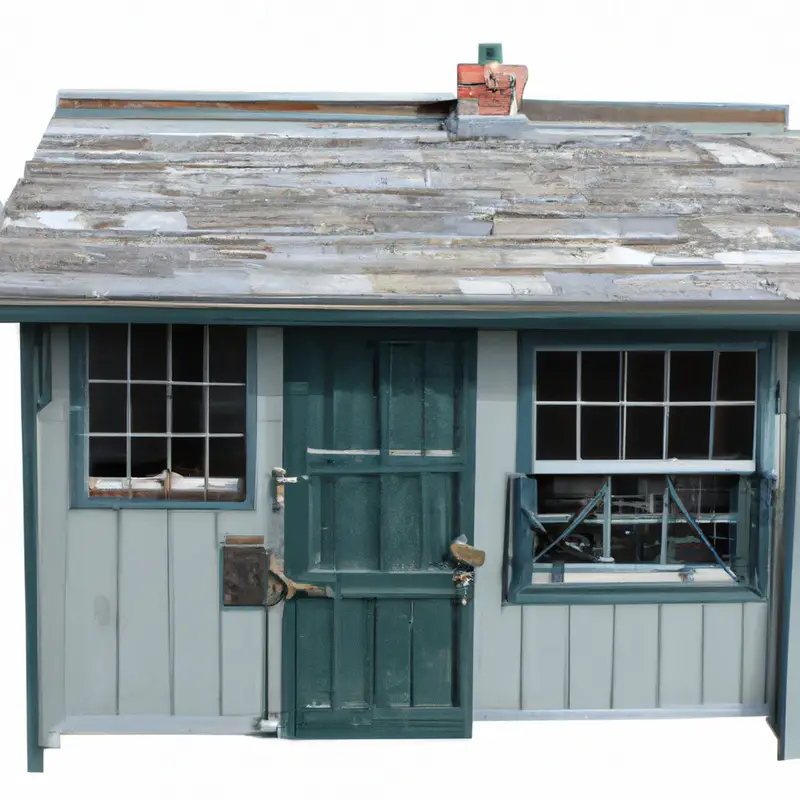
Steel: A Strong and Durable Option for Tiny House Construction
Advantages of Steel as a Building Material
Steel is a popular choice for building tiny houses due to its numerous advantages.
Firstly, steel is incredibly strong and durable, making it a reliable option for long-lasting structures.
Additionally, steel is resistant to pests, rot, and fire, providing added safety and peace of mind.
Steel is also highly customizable and can be easily molded into different shapes and sizes.
Furthermore, steel is eco-friendly as it can be recycled, reducing its environmental impact.
Lastly, steel is low maintenance, requiring minimal repairs and upkeep over time.
Overall, steel offers exceptional strength, durability, customization options, eco-friendliness, and low maintenance for tiny house construction.

Things to Consider When Using Steel for Tiny House Construction
When using steel for tiny house construction, there are a few key things to consider. Firstly, it’s important to be aware of the weight of the steel and ensure that the foundation and structure can support it.
Additionally, steel can be more expensive compared to other materials, so budgeting accordingly is crucial.
It’s also worth noting that steel can conduct heat, so insulation is important for maintaining a comfortable interior temperature. Finally, steel requires regular maintenance to prevent rust and corrosion.
Overall, with proper planning and maintenance, steel can be a strong and durable choice for your tiny house.
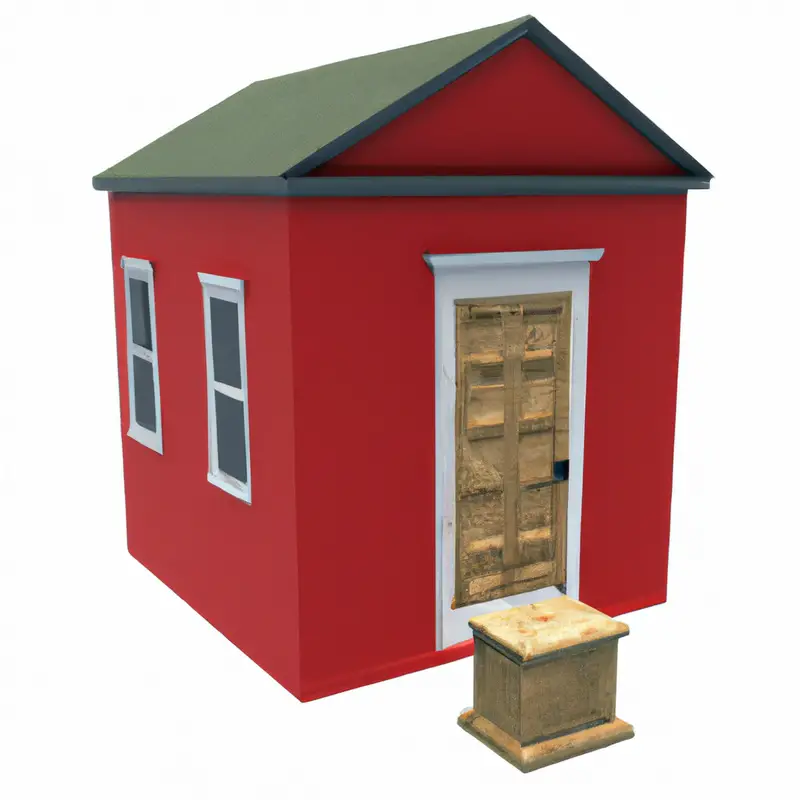
Notable Examples of Steel-Constructed Tiny Houses
There are several notable examples of tiny houses that have been constructed using steel as the primary material. One such example is the “Minim House” which features a sleek design and efficient use of space.
Another example is the “Alpha” by New Frontier Tiny Homes, which showcases a modern and minimalist aesthetic.
The “Baugruppe” by Haussicht is another steel-constructed tiny house that stands out for its energy-efficient design. These examples demonstrate how steel can be a strong and durable choice for building a tiny house.
Recycled Materials: An Eco-Friendly Approach to Building Tiny Houses
Benefits of Using Recycled Materials
Using recycled materials offers several benefits when building tiny houses. Firstly, it helps reduce waste and minimizes the amount of material sent to landfills.
Secondly, using recycled materials is an eco-friendly choice that contributes to sustainable development and conservation of resources.
Additionally, using recycled materials can be cost-effective, as they are often more affordable than new materials. Moreover, incorporating recycled materials adds a unique character and aesthetic appeal to the tiny house.
By choosing recycled materials, you can create a sustainable and environmentally friendly home while also saving money.
Challenges and Considerations with Recycled Materials
Using recycled materials in the construction of tiny houses offers several benefits, including reduced waste and environmental impact.
However, there are certain challenges and considerations to keep in mind.
- Quality and Durability: Ensure that the recycled materials you choose are of good quality and will withstand the test of time. This may require careful inspection and sourcing from reputable suppliers.
- Compatibility and Integration: It’s important to ensure that the recycled materials you choose are compatible with the rest of the construction and can be effectively integrated into the design. This may require some additional planning and customization.
- Availability and Sourcing: Depending on your location, finding a consistent supply of suitable recycled materials may be a challenge. It’s important to invest time in researching and building relationships with local suppliers or salvage yards to ensure a steady source of materials.
- Safety and Regulatory Compliance: When using recycled materials, it’s crucial to ensure that they meet safety standards and comply with local building codes. This may require additional testing or certification processes to ensure the structural integrity and safety of the tiny house.
- Aesthetic Considerations: Recycled materials may have a distinct look or patina, which can add character and uniqueness to a tiny house. However, it’s important to consider if the aesthetic appeal aligns with your personal preferences and the overall design concept.
By considering these challenges and taking appropriate measures, you can successfully incorporate recycled materials into your tiny house construction and contribute to a more sustainable and eco-friendly approach.
Inspirational Tiny Houses Made from Recycled Materials
I’ve come across some truly inspiring tiny houses that are constructed using recycled materials. These innovative builders have found creative ways to repurpose items and reduce waste, all while creating unique and sustainable living spaces.
One example is a tiny house that was built using reclaimed wood from old barns, giving it a rustic and charming feel.
Another impressive creation is a tiny house made from repurposed shipping containers, showcasing how something once used for transporting goods can be transformed into a functional and stylish home. These examples demonstrate the endless possibilities of using recycled materials in tiny house construction, proving that sustainable living can also be full of character and beauty.
Masonry: A Solid and Sturdy Choice for Tiny House Construction
Advantages of Using Masonry
Masonry offers several advantages for tiny house construction.
Firstly, it provides excellent durability and strength, ensuring a sturdy and long-lasting structure.
Secondly, masonry materials such as brick or stone offer natural insulation, helping to regulate the temperature inside the tiny house and reduce energy consumption.
Thirdly, masonry is fire-resistant, offering increased safety.
Additionally, masonry is low maintenance and requires minimal repairs over time.
This makes it a reliable and cost-effective choice for building a tiny house.
Factors to Consider When Building a Masonry Tiny House
When building a masonry tiny house, it’s essential to consider a few factors. Firstly, determine the weight-bearing capacity of the foundation to support the masonry walls.
Secondly, ensure proper insulation to regulate temperature and maximize energy efficiency.
Thirdly, plan for moisture control and waterproofing measures to prevent any water damage. Additionally, consider the availability and cost of masonry materials, as well as the expertise required for construction.
Lastly, think about maintenance requirements and the durability of masonry in your specific climate.
Noteworthy Examples of Masonry-Constructed Tiny Houses
Let me share some noteworthy examples of tiny houses that have been constructed using masonry.
One example is the “Haus Ouray” in Colorado, which is made entirely of locally sourced stone and blends beautifully with its natural surroundings.
Another notable masonry-constructed tiny house is the “Brick House” in Sweden, featuring a stunning brick facade and a sleek, modern design.
Lastly, we have the “Cob Cottage” in Oregon, built with cob (a mixture of clay, sand, and straw) and showcasing a unique and rustic aesthetic.
These examples demonstrate the durability, beauty, and unique character that masonry can bring to tiny house construction.
Alternative Materials: Exploring Unique Options for Tiny Houses
Unconventional Building Materials for Tiny Houses
Unconventional Building Materials for Tiny Houses In addition to traditional options like wood, steel, and masonry, there are several unconventional materials that can be used to build tiny houses. Some examples include:
- Shipping containers: These sturdy and readily available containers can be repurposed into unique and compact homes.
- Cob: Made from clay, sand, straw, and water, cob is a natural and sustainable option for tiny house construction.
- Earthbags: Constructed using polypropylene bags filled with earth or other locally-sourced material, earthbags provide strength and affordability.
- Straw bales: Providing excellent insulation, straw bales are an eco-friendly alternative that creates energy-efficient tiny houses.
While these materials offer exciting design possibilities, it’s important to consider factors such as durability, maintenance, and local building codes before choosing an unconventional option.
Pros and Cons of Using Alternative Materials
When it comes to using alternative materials for building tiny houses, there are both pros and cons to consider.
On the positive side, alternative materials often offer unique aesthetics and can contribute to a more eco-friendly construction process.
They may also be more affordable or readily available in certain areas.
However, there are challenges to consider, such as limited availability, lack of industry standards, and potential durability issues.
Additionally, some alternative materials might require special expertise to work with and maintain.
It’s crucial to carefully weigh the benefits and drawbacks before deciding on using alternative materials for a tiny house project.
Extraordinary Tiny Houses with Unique Material Choices
There are many extraordinary tiny houses out there that have made unique material choices for their construction.
These houses stand out because they use unconventional materials that add character and charm to their design.
For example, some tiny houses have been built using repurposed shipping containers, creating a modern and industrial aesthetic.
Others have utilized salvaged materials like reclaimed wood or recycled metal, giving them a rustic and environmentally-friendly appeal.
These extraordinary tiny houses showcase the creativity and innovation that can be achieved when thinking outside the box when it comes to building materials.
Final Verdict
When it comes to building tiny houses, the most common materials used are wood, steel, recycled materials, masonry, and alternative materials. Each of these options offers unique benefits and considerations.
Wood is a classic choice, known for its versatility and aesthetics.
Steel provides strength and durability. Recycled materials offer an eco-friendly approach.
Masonry offers solidity and sturdiness.
And alternative materials provide a chance to think outside the box. By understanding the advantages and considerations of each material, you can make an informed decision and create a tiny house that suits your needs and preferences.
Whether you prioritize sustainability, strength, or creativity, there’s a material option for you.
Remember, it’s important to consider factors such as cost, availability, and maintenance requirements when selecting the material for your tiny house construction. Overall, the key is to choose a material that aligns with your goals and vision for your tiny house.
Happy building!
